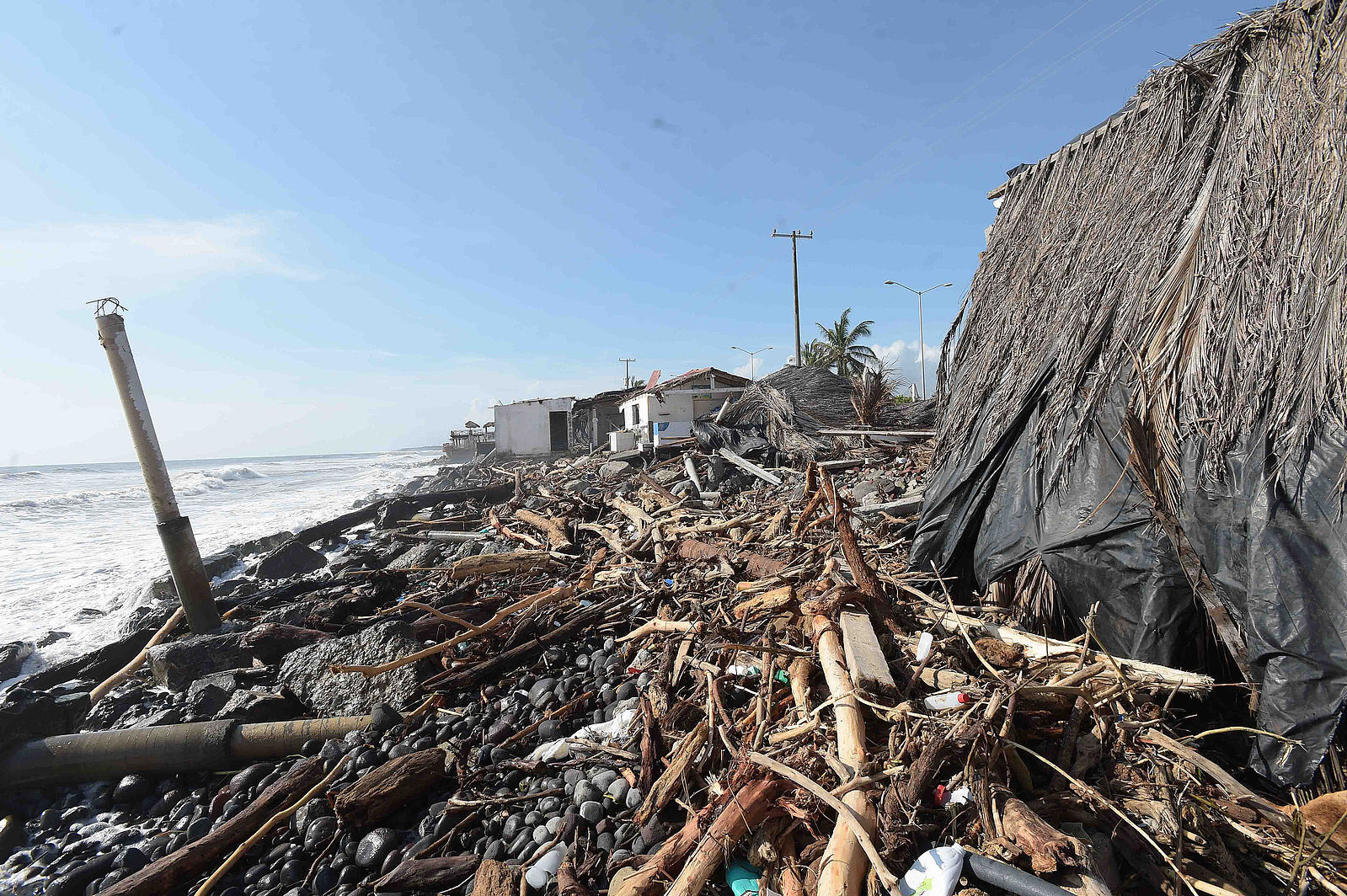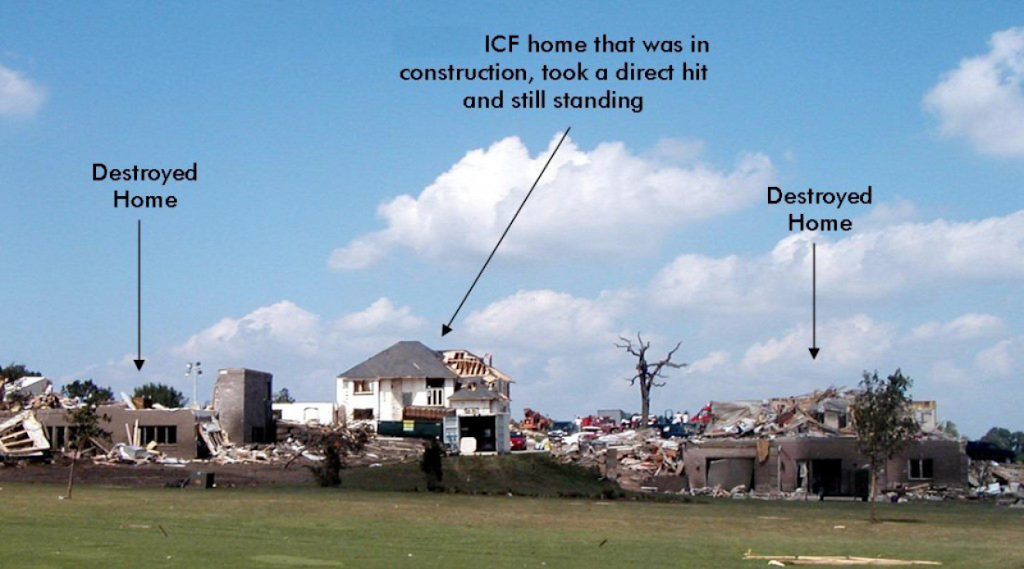
A Complete Guide to Hurricane-Resistant Buildings

Hurricanes are incredible examples of the power that Mother Nature can unleash. Buildings that are designed to withstand that type of power have to be up for the challenge. Inferior materials and designs not only are expensive to repair but can end up costing lives. In 2021 alone, 21 hurricanes resulted in more than $70 billion in damages and more than 100 deaths in the U.S.

How Much Damage Can Hurricanes Do?
Hurricanes are a result of low-pressure air heated close to the Equator. These warm packets of air rise and form storms that gradually group together to form thunderstorms. As the storms grow, they interact with the rotation of the Earth and start to rotate cyclonically. Low wind shear and warm ocean waters are the recipe for those spinning storms to strengthen into a hurricane.

Hurricanes are classified using the Saffir-Simpson Hurricane Wind Scale. Starting at a category 1, the highest level is a category 5 hurricane. Categories 3 through 5 are considered to be major storms.
Category 1 - 74-95 mph sustained winds - very dangerous winds will produce some damage
Category 2 - 96-110 mph sustained winds - extremely dangerous winds will cause extensive damage
Category 3 - 111-129 mph sustained winds - devastating damage will occur
Category 4 - 130-156 mph sustained winds - catastrophic damage will occur
Category 5 - 157+ mph sustained winds - catastrophic damage will occur
Which Materials Are Hurricane-Resistant?
Withstanding a hit from a hurricane, especially a major storm, can be very difficult. Selecting the right materials and the right construction methods are crucial.
Concrete
One of the strongest building materials available, concrete is incredible at withstanding pressure and stress. Concrete is dimensionally stable, and does not contract or expand during extreme weather events. While concrete is naturally strong under compression, adding steel reinforcement makes concrete a force to reckon with.
Concrete is not just strong and durable, it is also readily available. After water, concrete is the second most used material in the world. Often produced locally, concrete can be a great and economical choice for building a hurricane-resistant structure.
Unit Masonry or Cement Block
Cement blocks are coupled with steel reinforcing bars, resulting in a strong and rigid building. Compared to wood construction, it is much more expensive but still cheaper than poured-in place concrete.
Steel Frame Construction
Steel is commonplace in commercial construction but is becoming more common in residential buildings. Just like in traditional stick-built homes, studs are used for the load bearing walls. Metal studs are strong and noncombustible, but can be more expensive and harder to work with. Builders who routinely work with wood may struggle attempting steel construction.

Wood Construction with Hurricane Strapping
Wood is typically not the go-to for a hurricane-resistant building, but wood construction is still the most common type of construction. Aspects like hurricane strapping can be added to a wood-framed building to add additional hurricane resilience.
Shear walls are critical to prevent the house from tipping over under heavy winds. Shear walls have to be able to withstand the hurricane's force and transfer it to the building’s foundation. Hurricane strapping helps keep the house from being literally pulled apart at the seams. While not the ideal hurricane proof solution, shear walls and hurricane strapping are an affordable way to build a more resilient structure.
Metal Roofing
When you picture an area after being hit by a hurricane, it is not uncommon to see many roofs missing. Instead of traditional asphalt roofing, consider upgrading to a durable metal roof. Even with high winds and storm damage, metal roofs will stay intact. Keeping your roof intact is the key to keeping your building and its occupants safe.
Insulated Concrete Forms
Insulated concrete forms (ICFs) are composed of concrete sandwiched between two layers of insulated foam. The blocks are assembled at the job site according to the plans. During assembly, the space between the layers of foam is empty making the blocks very easy to work with.

Once the walls are assembled, steel reinforcing bars are engineered to be evenly spaced vertically and horizontally and placed in the ICF blocks. Concrete is then poured into the space and allowed to cure. After the concrete has hardened, what is left is not just an incredibly strong steel reinforced concrete structure, but a high performing building too. ICF blocks have insulation values of R-23 or higher and are rated for use in the construction of storm shelters.

Fox Blocks ICFs are designed to be easily customizable, and are available in many different shapes, sizes, and concrete core thicknesses. Fox Blocks ICFs can be used with many different interior and exterior finishes including EIFS, stucco, brick, stone, and fiber cement.
Choose Fox Blocks for a Truly Hurricane-Resistant Home
Fox Blocks meets the national high-wind testing and compliance standards per ICC-500 and FEMA P-361. Fox Blocks are not only unmatched in performance and durability, but they are economical too. By combining many construction steps into one, Fox Blocks provides incredible labor and material savings. When selecting the materials for your hurricane-resistant structure, make sure to choose Fox Blocks.

To learn more about how Fox Blocks can work for your next project, reach out to their experts today.